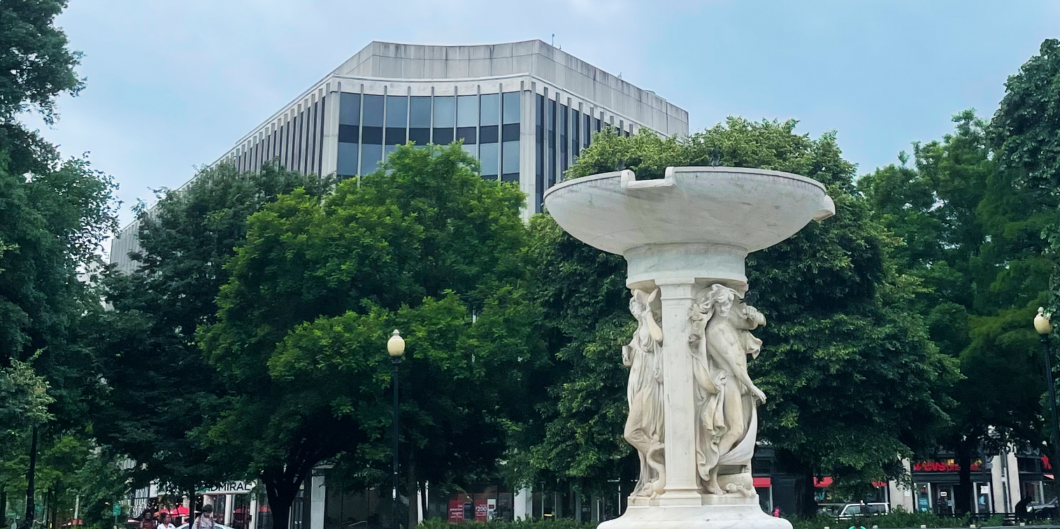Reading classic literature to young children helps form their imagination and moral judgment. And it's more important today than ever.
Repeal and Replace Today’s Education Cartel
Our current education system (higher ed joined with K-12) was born in the Progressive Era. Before 1900, American education was, as progressives say, the Wild West. Many different kinds of grammar and secondary schools bloomed, including what we now call K-12 systems, but also prep schools, boarding schools, trade schools, simple K-8 schools, homeschools, country schools. Compulsory schooling laws, started in Massachusetts in 1852, barely extended past primary schools until well after the Civil War.
America’s higher education contained diverse pathways as well. Most colleges followed the classical model and were connected to schools that prepared students for substantive entry requirements (did you master Latin?) and not procedural ones (did you graduate high school?). There were also academies (training students for vocations) and guild-organized trade schools to ready youngsters for employment.
Were these schools any good? There were no National Assessment of Educational Progress (NAEP) tests to confirm it! Nor were there teacher unions or schools of education to certify that teachers were superbly qualified! Progressive reformers, acting at first through the private sector, built a system that slowly evolved into today’s stultifying education industrial complex. Reworking this system requires destroying the college cartel and unleashing entrepreneurial spirit that Frederick M. Hess and Michael Q. McShane suggest; but using public power to build alternatives and, in our context, reconstruct the less formal system that existed before the progressives destroyed it.
The Progressive Cartel
The progressive achievement is celebrated in Frederick Rudolph’s indispensable Curriculum: A History of the American Undergraduate Course of Study Since 1636, published at the behest of the Carnegie Foundation in 1977. Rudolph charts the decline of the informal classical college system (and its related primary schools) and the rise of the modern bureaucratized education system. Rudolph frames the crisis and disarray of American education from the late 1800s as a lack of standardization remedied through providing institutions, organizations, and measurements to guarantee quality.
While Rudolph’s main story is the rise of the modern higher education system, he describes the whole education system. The old college system had entry requirements—mastery of Greek and Latin, for instance. New colleges and universities, some emphasizing research or vocational training, needed different admissions requirements. These new models coincided with an explosion in the sheer number of institutions. There were 563 institutions of higher education in 1869–70; 977 in 1899–1900; and 1,708 in 1939–40. How could admission to this exploding array of schools be made easier? Answer: standardize secondary schools. Secondary schools, which had to offer certain courses as measured in Carnegie units, would have to be certified by regional accreditors. This meant that local public schools, which mostly ran through eighth grade, had to extend compulsory education to ever higher levels. This was underway in the 1910s.
Students used to attend academies or trade schools to prepare for careers. Instead, those functions would be absorbed by high schools, colleges, or universities into one standard system, in which all students had to participate. Earlier, for example, primary school teachers had been prepared in normal schools (2 years) or through apprenticeships; after the progressive reforms, teachers needed to be university graduates and earn four-year degrees through Schools of Education. Professional and Standardized.
Yet colleges and universities could not safely assume that high school students would have sufficient mastery of material, so they developed general education requirements on campus as a bridge between “high schools” and “higher education.” This became part of increasingly formal standards to be called a college or a university.
The Carnegie Foundation’s standardizing zeal was especially important to higher education. Carnegie offered to fund pensions for college faculty, but this required it to ascertain eligibility criteria and to raise and answer the question: what is a college or university? Its first answer, published in 1906, included 1) requiring fourteen units of high school credit for admission; 2) a certain size of endowment; and 3) no denominational affiliation in the school’s mission. Annually, Carnegie and other foundations elevated requirements to guarantee quality. Department heads had to have PhDs. Later, a certain percentage of faculty would need PhDs. Maximum teaching loads were established. Libraries had to be of a certain size. Tenure would have to be offered and protected. Academic departments would be the organizing units in higher education. It would have to offer concentrations or majors, along with general education requirements.
The standardization of undergraduate experience was thought necessary to make room for serious professional schools, including most medical and law schools. The preparation of American doctors was thought abysmal—Carnegie funded reports to prove it too. Standardized routes to medical school would increase quality. Medical schools would have standardized curriculum. They would have minimal years in training requirements. Admission to medical schools, previously done on a case-by-case basis, would require an undergraduate degree from a Carnegie-approved higher education institution. Thus, undergraduate became the entrée for “higher” professional schools in business, dentistry, law, etc. Later, standardized tests would be added to help standardize competitive admissions processes.
All of these features (PhDs for faculty, accreditation, organization by department, majors and general education, compulsory high school, tenure, undergraduate as a preparation of professional school)—features we take for granted as coeval with institutions of higher education—are progressive innovations. Many of them, born of private action, are now institutionalized under law (e.g., accreditation standards, teacher certification, general education). Others have become sown into our expectations (tenure, faculty composed of PhDs).
The entrepreneurial spirit needs assistance from public authorities or Carnegie-like private institutions to renew American education as a whole.
Reconstituting Education
Above all, efforts to rethink education must return to the moment before progressive reform and evaluate what was done in light of today’s circumstances, as Hess and McShane suggest. It is immensely liberating to see how most of the features in our education system are only about 100 years old. What was built can be unbuilt and rebuilt. Government must do more to rework the progressive system aside from disrupting the cartel.
We need to rethink how K-12 interlinks with undergraduate and how undergraduate interlinks with professional schools. We need to rethink whether credentials signal quality. The value of general education must be reevaluated. The rise of school choice movements in K-12 allow further opportunities for reevaluation. Everything is on the table. Everything.
Consider a few examples. The division of undergraduate education between major education, general education, and electives arose when there hardly was K-12 education. General education was adopted in part to ensure a consistent basis of skills among those most recently admitted who were not from K-12 schools (and in part to salvage vestiges of the old classical college). Since K-12 education is now required for admission everywhere, it is time to revisit this organization of higher education. Perhaps general education for everyone should be revised to cultivate an appreciation for Western Civilization. Perhaps it is too late to shape the affections of undergraduates in favor of Western Civilization and such efforts should be undertaken in K-12. Universities and colleges could be more selective about which academic programs need general education.
General education is no longer needed for a lion’s share of students including those who are aiming at professional schools. Why is an undergraduate degree necessary for entry into medical school or dental school? Germans can go from gymnasium to medical school and be practicing medicine by the time they are 26 or 27. American doctors must go through K-12, then undergraduate, then medical school, and begin practicing when they are around thirty. Our system of credentialing and certification, born of the progressive reform, make this necessary.
Elements of the old system—like entrance exams—could be reintroduced. To dismantle this system, it might be necessary to mandate that all medical schools offer a real testing admissions option, where high schoolers can take exams and win admission with a sufficiently high score. Medical school enrollees, for instance, could be required to know a lot about biology, anatomy, and organic chemistry on admissions tests. High schools, homeschools, and special academies around the country, aided by Education Savings Accounts, might then pop up to teach talented students in those subjects. Eighteen-year-old students could attend such high schools, take the test, and go into medical school. The K-12-undergraduate-medical school pipeline arose in a different era, when high schools were just being established. Undergraduate seemed necessary to ensure quality in the early 1900s when it was common for those who had just completed eighth grade to go to medical school. This is no longer the case. Undergraduate may not be necessary for doctors, lawyers, dentists, and other professionals today.
Generally, government should get out of the business of requiring a process for learning (a characteristic of the progressive system) and instead require that students demonstrate the actual learning (a competitive process). Such an emphasis on testing and accomplishment would obviously cut against the current trends, demanded by our reigning civil rights regime, of credentialing and race/sex preferences. Yet demanding evidence of actual learning, as institutions define such learning, would also open up real diverse pathways through the education system.
Instead of seeking carve outs or choice for accreditation, reform advocates should dictate different terms at those choke points. Medical schools that fail to offer a test-based admissions option would fail to win accreditation. Undergraduate education programs that require participation in general education programs (and do not have options to essentially become general education certified for high school graduates who can pass a test) would lose accreditation or public support. K-12 school choice programs promise to be even more disruptive and point to the need to require alternative modes of testing for admissions undergraduate programs and professional schools.
Times of obvious collapse and corruption open up opportunities to rethink things to the root. Soon, perhaps, academies dedicated to trades or vocations may be popping up again, and trade schools supporting workforce education shall arise, and law schools based on apprenticeship models can be once again established. Simply clearing the underbrush of monopolistic practices is not enough in our environment, where money and honor are attached to the prevailing system. The entrepreneurial spirit needs assistance from public authorities or Carnegie-like private institutions to renew American education as a whole.



